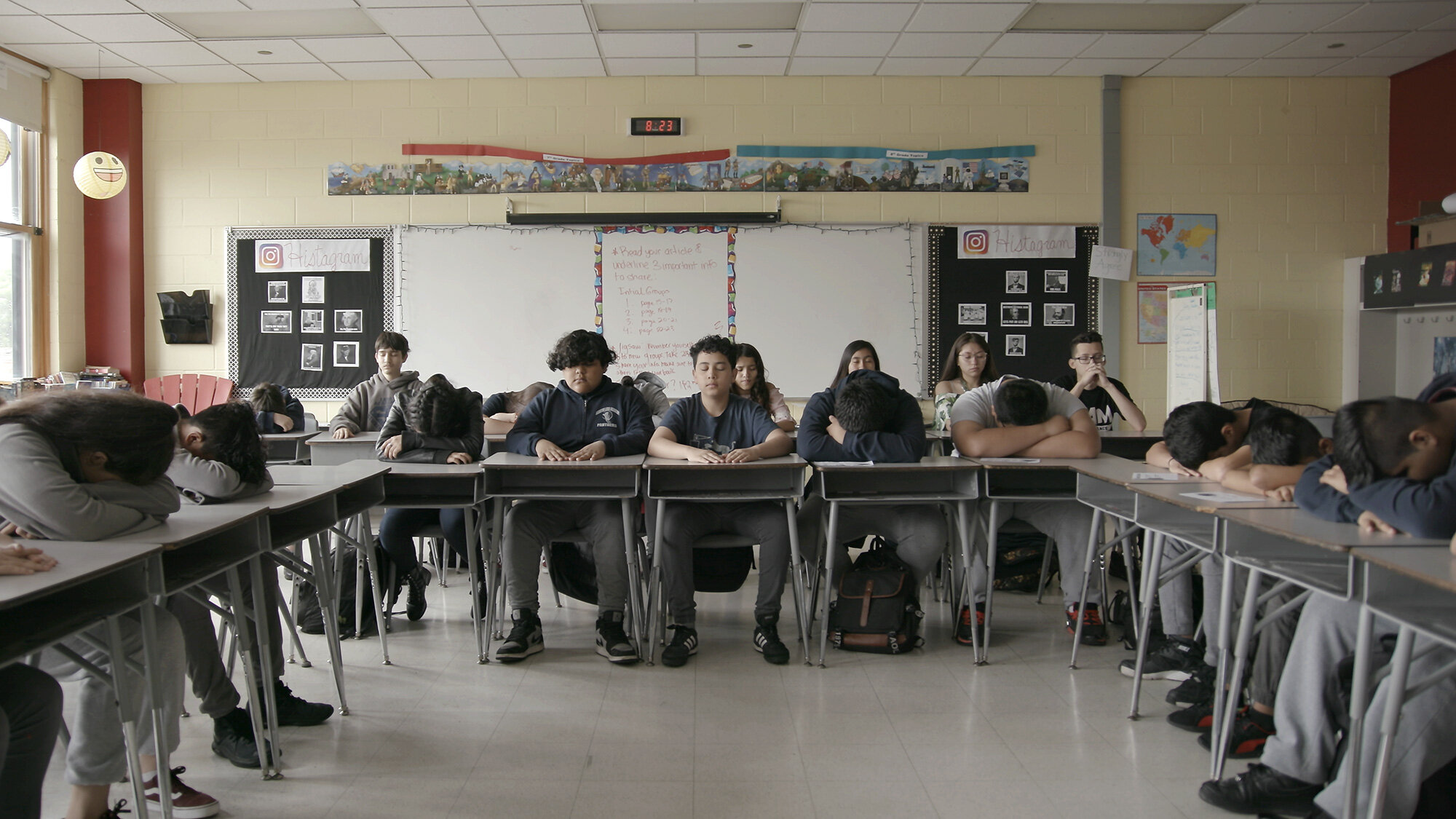“It’s war. You’re going to see the wounds of war.”
This grave warning comes from a gun-safety-training officer who, with a team of others, is in the business of training teachers to prepare for the likely possibility of an armed intruder to their classroom. It’s with a chilling, overtly masculine “ooh-rah” cadence that these muscle-ripped crisis-prevention officers attempt to prepare teachers (already terrified) to adopt a new mindset with out-of-context Bible verses and nonsense like “love is the opposite of fear” to discourage panic and encourage shooting to kill. It all fits with the rhetoric that this is somehow a natural fit with their job description, seemingly director Todd Chandler’s primary focus. His unmoving camera, no doubt echoing the tone of Gus Van Sant’s Elephant, shows how normalized all this has become without ever trying to tack on any extra sense of pomp or sensationalism.
Bulletproof is a constant stream of static angles, putting the everyday public school—looking and feeling more like a prison—on display. The most troubling and surprising contributing factor to the detention-center atmosphere is a new method of camera surveillance that not only monitors every inch of the school but also identifies who is where in real time. Students and faculty are required to wear tags the camera can recognize at all times so that, should a lockdown situation ever occur, the security team would be able to quickly see how many people are in what room. This is the first step of a Minority Report-esque strategy where hired specialists are dead set on somehow stopping a shooter before they strike, spending millions of dollars in the process.
Following the money outside the school, we’re taken to Las Vegas to see how this epidemic has perversely bred invention. Between B-roll of watchful eyes on billboard screens and ads for raw meat, we get an inside look at convention centers where men have figured out how to turn this into a business. All these initiatives (some advertised with half-dressed models) are designed to neutralize a shooter, not prevent one, thus acknowledging that current conditions make the threat imminent and inevitable. All the best security, bulletproof desks, and guns are sold to schools and organizations here.
But it’s not just companies who get involved: it’s start-up individuals too. The one we focus on, far away from the glitz of Vegas, hand-manufactures bulletproof hoodies in her home by herself. She does this not to break into the business, but because she thinks it can be a practical solution for kids who feel afraid just walking around school and in their neighborhood. This is costly for her, of course, and is resolved rather grimly by the end when she reveals that gun companies themselves are interested in manufacturing and selling her hoodies in a classic snake-eating-its-own-tail situation.
We don’t hear from these kids until roughly Bulletproof‘s midpoint. In a smart touch from Chandler, we only hear students when they’re laboriously reciting a script, written for them, about what to do in a shooter situation that’s broadcast to the rest of the school. The focus is on the staff, equally downtrodden and paranoid. From the start they acknowledge this is a situation they don’t want to be in but have no control over. This gets at the inherent unfairness of the extra burden put on teachers, making viewers wonder what other occupation comes with such a dangerous and necessary duty that so contrasts with what they signed up for—and with no additional pay. This is a well-acknowledged problem in America, but seeing the real-world, immediate effects on adults—so scared that they’re willing to get familiar with a handgun on their time off—is of course very troubling.
In the second half, when we do get to hear from the kids in these classrooms, there isn’t a singular perspective. One student says the constant drills are just as traumatizing as an actual shooting; another says they’re necessary because sometimes she’s so scared of the potential horrors that she won’t go to school. They are routinely subjected to these drills and to real footage of more recent shootings, which have (unsurprisingly) made school something to dread. By choosing these perspectives, rather than dwelling on low-hanging weepiness, Chandler proves that these kids are, as David Bowie said, quite aware of what they’re going through—not merely pawns to be managed as some of the external people in charge might think (one of whom blamed the existence of school shooters, bafflingly, on SSRIs).
Chandler is as interested in the emotional toll this takes on teachers and students alike as he is on the inescapable existential dread of America’s gun problem. Because we are far beyond the initial shock value of guns in schools, the film shows what it’s like to be settled into that as a reality, not something that can be prevented. From this perspective, Bulletproof doesn’t offer many new insights, but it does function as a valuable capsule of the stark consequences that have come as a result of so much hype followed by indifference.
Bulletproof opens in theaters on Friday, October 29. Learn more here.

